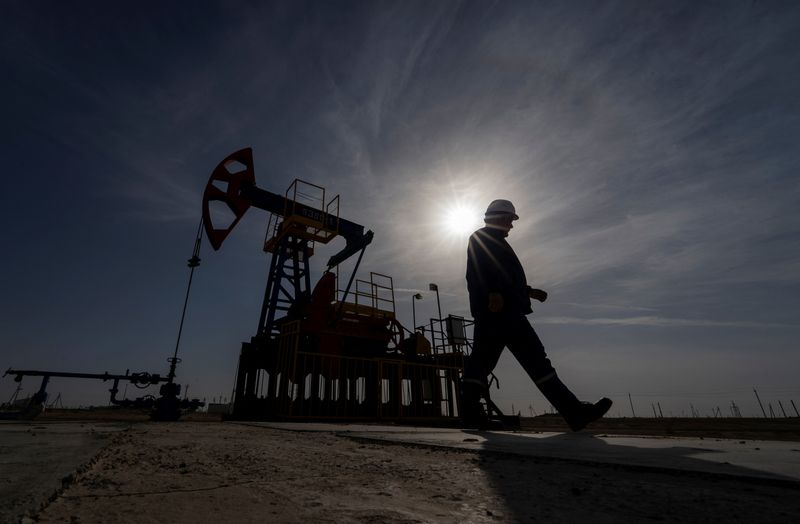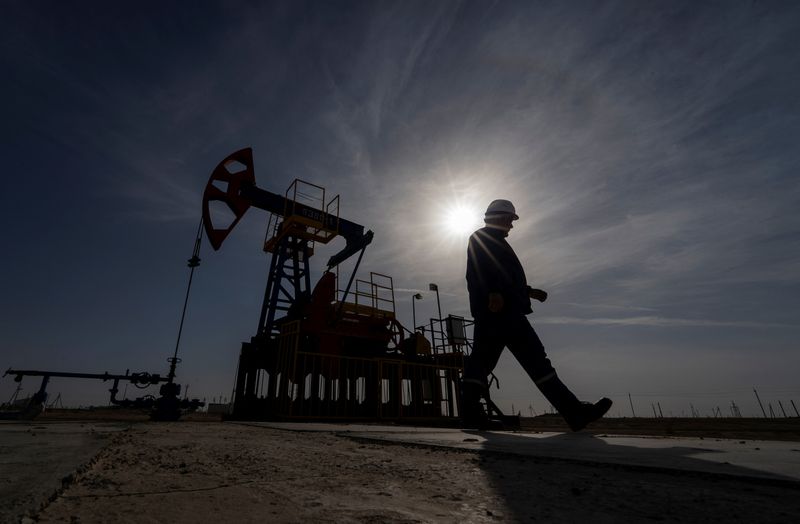
By Arunima Kumar
(Reuters) -Oil prices crept higher on Wednesday as the market focused on potential supply disruptions from sanctions on Russian tankers, though gains were tempered by a lack of clarity on their impact.
Brent crude futures rose 29 cents, or 0.36%, to $80.21 a barrel by 1008 GMT. U.S. West Texas Intermediate crude was up 33 cents, or 0.43%, at $77.83.
The latest round of U.S. sanctions on Russian oil could disrupt Russian oil supply and distribution significantly, the International Energy Agency (IEA) said in its monthly oil market report on Wednesday, adding that “the full impact on the oil market and on access to Russian supply is uncertain”.
A fresh round of sanctions angst seems to be supporting prices, along with the prospect of a weekly U.S. stockpile draw, said Ole Hansen, head of commodity strategy at Saxo Bank.
“Tankers carrying Russian crude seems to be struggling offloading their cargoes around the world, potentially driving some short-term tightness,” he added.
The key question remains how much Russian supply will be lost in the global market and whether alternative measures can offset the shortfall, said IG market strategist Yeap Jun Rong.
The market also found some support from a drop in U.S. crude oil stocks last week, market sources said, citing American Petroleum Institute (API) figures on Tuesday.
Crude stocks fell by 2.6 million barrels last week while gasoline inventories rose by 5.4 million barrels and distillates climbed by 4.88 million barrels, API sources said.
A Reuters poll found that analysts expected U.S. crude oil stockpiles to have fallen by about 1 million barrels in the week to Jan. 10. Stockpile data from the Energy Information Administration (EIA) is due at 10:30 a.m. EST (1530 GMT).

On Tuesday the EIA trimmed its outlook for global demand in 2025 to 104.1 million barrels per day (bpd) while expecting supply of oil and liquid fuel to average 104.4 million bpd.
It predicted that Brent crude will drop 8% to average $74 a barrel in 2025 and fall further to $66 in 2026 while WTI was projected to average $70 in 2025, dropping to $62 in 2026.
This post is originally published on INVESTING.



